By Swetha R K, Senior Research Analyst, Frost & Sullivan & Vidya S Nath, Research Director
Introduction
OTT services, also known as Video-on-Demand (VOD) services, distribute video content over connected devices using wired or wireless broadband. Europe’s high Internet penetration rate of 77% has triggered a boom in this sector (Figure 1). While Pay TV still holds a significant share of video consumption with over 170 million subscribers across Europe as against 35 million online video viewers , content consumption from digital platforms is growing at an enormous pace. European Commission’s Digital Single Market (DSM) strategy, which strives to create a favorable environment for digital trade by means of infrastructure initiatives (Ex: Launch of 5G) and regulatory changes (Ex: Removal of Geo-blocking), is set to boost the growth of OTT video market.
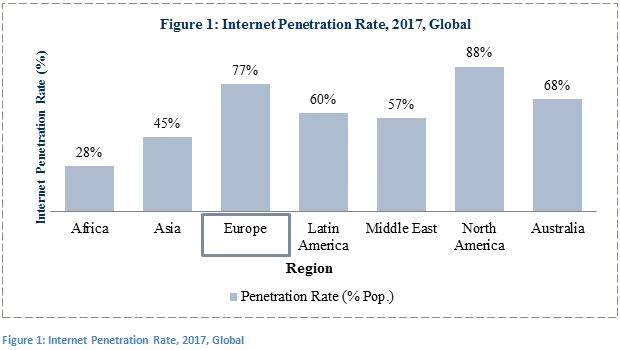
Connected devices powering growth of online video
A favorable regulatory environment and faster and better broadband coupled with a high smartphone penetration rate of 84% have led to a burgeoning of OTT services across Europe in the last few years. With over 450 unique OTT providers, Europe as a region has by far the largest number of OTT services globally, spanning across different revenue models such as SVOD, TVOD, and AVOD. These services let the users view the video content of their choice on demand at their convenient time.
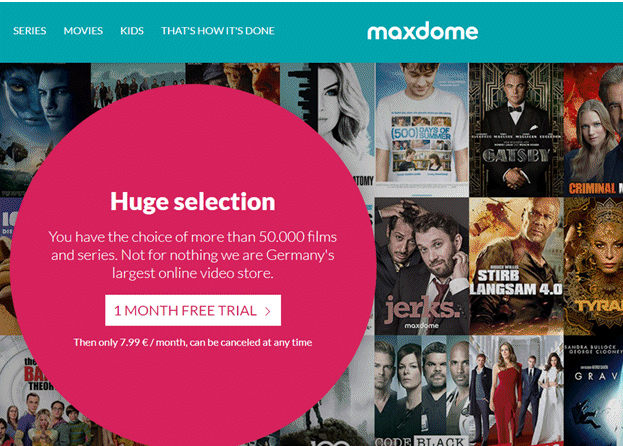
According to Frost & Sullivan estimates, the market size in revenue for connected video on demand services in Europe grew at an annual growth rate of 40% to reach €4.3 billion in 2016. Such traction has been particularly driven by higher adoption of global SVOD giant, Netflix, whose subscriber numbers have more than tripled since 2012 when it first launched its services in UK and Ireland.
Smart phones and Smart TVs, in particular, have caused a tremendous shift in viewership trends. Frost & Sullivan estimates that 65% of all Internet users are active video viewers through connected devices such as Tablets, PC, Laptops, Smartphones, and Smart TVs. SVOD platforms today strive to provide an interactive user experience irrespective of the device they use.
The European market is now prime for the growth of the digital advertising. Since 2015, digital advertising revenue has surpassed the television advertising revenue on a pan European basis . While video advertising is less than 5% of digital advertising today, in-stream ads, overlays and other forms are boosting the growth for online video advertising. According to Frost & Sullivan estimates the digital video advertising market will grow at 18.6%.
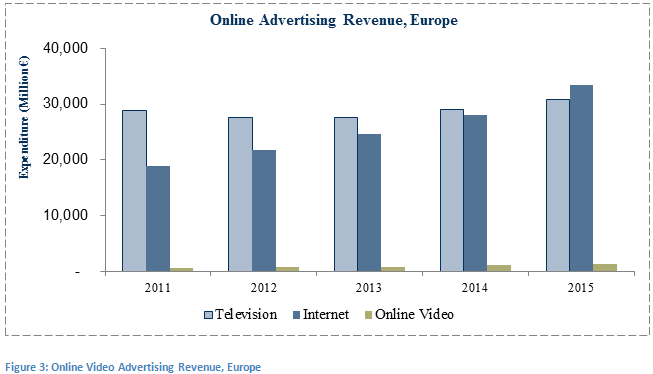
The Problem of Plenty: Is the Market Headed toward Consolidation?
Although Netflix holds the leadership position across Europe, the company is struggling in key markets such as France and Germany where local Pay TV networks, telecom providers rule the market with their triple play and quad-play services. Amazon, a direct rival to Netflix, is gaining a strong foothold in some countries such as Germany and is proving to be an attractive option for consumers due to the coupling of its membership plans with the retail arm of the business.
However it is the myriad set of local media companies and Pay TV providers who are driving intense competition in the region. For instance Sky, the European quad-play giant, has its own OTT service Now TV bundled with its Pay TV which is gaining rapid traction. Similarly, OTT services of Cable/Pay TV operators such as Canal Play (Canal Plus) in France, Maxdome (ProseibenSat.1) in Germany, Ziggo in the Netherlands, Yomvi (Movistar ) in Spain and so on are leveraging their existing customer base and infrastructure to capture a higher market share and prevent customer churn.
Alongside, Europe has seen a number of diverse OTT services emerging over the past two years and expanding in their viewership across different countries. For example, T-Mobile Netherlands-backed Knippr, Japanese company Rakuten-backed Wuaki, NBC-Universal backed Hayu, among others. A number of smaller companies have joined the fray – all attempting to differentiate based on attributes such as business model, video resolution, or content. For instance, there are over 20 OTT service providers offering children’s content which includes specialized content companies such as Azomee and Hopster. We expect the children’s genre to grow in content repository for the total market.
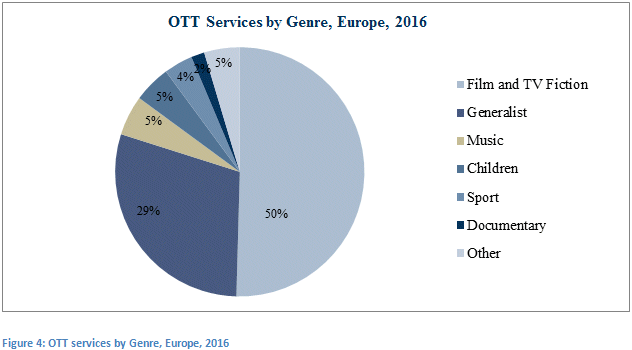
Frost & Sullivan opines that while the market participants are each recording millions of ‘registered viewers’ for their sites, very few will be commercially sustainable in the long term. In line with the recent spate of mergers and acquisitions in the European media and entertainment industry, several large media and Internet companies will start identifying OTT companies with a strong cross-regional base for acquisition. Frost & Sullivan anticipates that this consolidation wave will leave the ecosystem with a handful of European and international players claiming majority of the market share over the next five years.
Converged Services – The Future of Video Industry
At present, the OTT industry is both a threat and a thriving partner to the Pay TV networks and broadcasters. In order to attract the cord-cutters, Pay TV networks and broadcasters combine their existing Pay TV package with an SVOD or TVOD service, thus co-existing with OTT providers. A similar trend is observed with telecom operators who position OTT as a value added feature in their bundle of existing services to make it more appealing to the consumer. However, Pay TV packages typically cost around €50 a month while SVOD packages are priced at an average single-digit monthly fee of around €6 which makes OTT an attractive alternative for cord-cutters. However, the lower subscription costs also put a strain on the companies, as the license cost for good television content is typically high. Consequently, pure play OTT providers are experimenting with other business models and revenue streams to keep up with the competition and at the same time launching their own in-house content studios to conserve costs on content licensing.
As boundaries blur, critical success factor for OTT players is to focus increasingly on content. Europe’s diverse population with different language preferences acts both as a challenge and an opportunity for OTT service providers. The tolerance level for international and subtitled content varies across different European countries. Providing region-specific content in local languages will act as a major differentiator for content owners and OTT players, unlike the United States where majority of the population consumes predominantly English content. French and German are most popular languages in which OTT Video content is offered in Europe after English (Table 1).
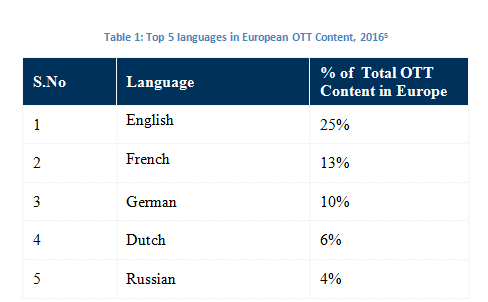
In such an intensely competitive market, content producers and distributors are constantly reinventing themselves to provide a converged platform that can enable consumers to not only get the content of their choices but also an optimal user experience, where personalization of content, recommendation, and analytics are important. In-house content production, multiplatform compatibility of video content, increase in prevalence of OTT streaming devices such as Roku, Chromecast, Apple TV and so on are pointing to a market that is moving toward convergence.
Conclusion
In terms of the industry growth maturity, the OTT market in Europe has highly evolved. With a high percentage of connected user base and an increasing demand for high quality content, especially in 4K and HDR, Europe is an attractive market for convergence and consolidation; opportunities abound for every stakeholder in the ecosystem to grab as much viewership from their consumers. The key to success lies in leveraging the best of both the digital and the traditional TV worlds.
[1] Frost & Sullivan estimate
[2] GSMA
[3] Image Source: Maxdome Website
[4] European Audiovisual Observatory Report
[5] Mavise



